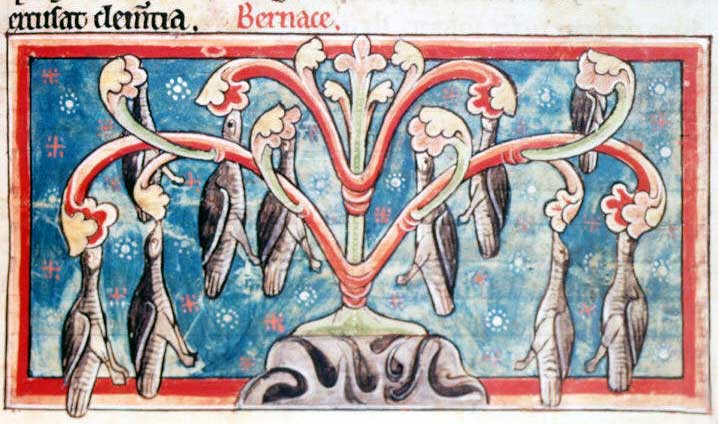 According to The Travels of Sir John Mandeville written in the fourteenth century, the barnacle tree, also called goose tree, bore a fruit that became flying birds. These trees were known in Shakspeare’s time and Gerard the English botanist and contemporary of Shakespeare notes that in the northern parts of Scotland and adjacent islands, there are trees that produce white to russet shells that contain living creatures. When the shells mature the creatures that fall into the water become geese while those that fall on land die. Gerard provides detailed descriptions of these trees found in different area of England.
According to The Travels of Sir John Mandeville written in the fourteenth century, the barnacle tree, also called goose tree, bore a fruit that became flying birds. These trees were known in Shakspeare’s time and Gerard the English botanist and contemporary of Shakespeare notes that in the northern parts of Scotland and adjacent islands, there are trees that produce white to russet shells that contain living creatures. When the shells mature the creatures that fall into the water become geese while those that fall on land die. Gerard provides detailed descriptions of these trees found in different area of England.
Shakespeare mentions barnacles in The Tempest (act iv, sc. 1, 248) when Caliban, Prospero’s slave, says to Stephano and Trinculo, his partners in crime, as they carry out their plan to kill Prospero;
I’ll have none on’t. We shall lose our time
And all be turn’d to Barnacles or apes
According to T. H. White’s book, The Bestiary, the barnacle tree was invented to account for two facts: first, that geese were never seen to breed because they are migratory, and second, that shellfish have the shape and coloration of wild geese with their wings folded. White further points out that translators used the word “wings” to describe the two shells of oysters, which added to the concept.